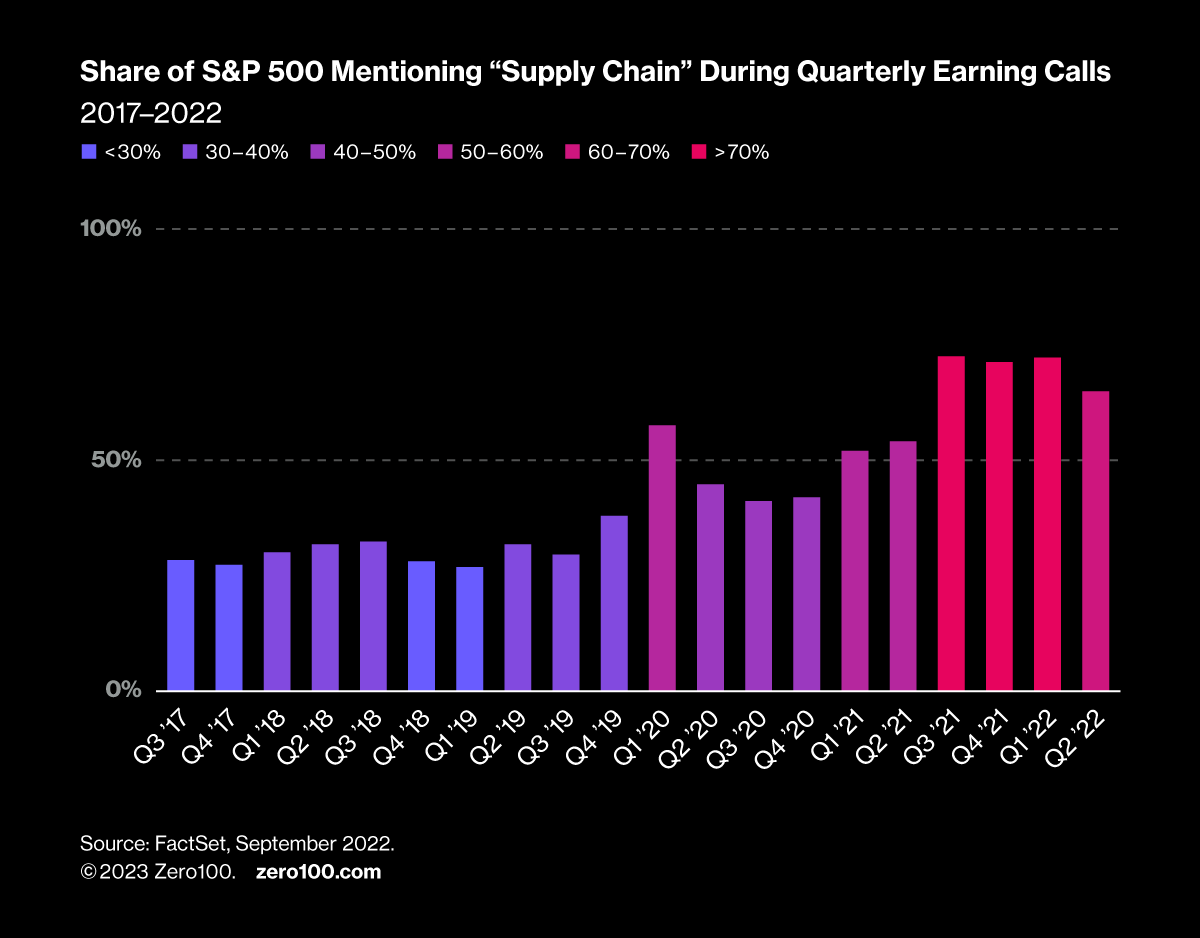
Three Megatrends Driving Supply Chains Into 2024
Three supply chain megatrends: 1) Digitization for Customer Problem-Solving, 2) Regionalization for Resilience, and 3) Talent Transformation for Margin Protection. Lessons from Apple, Walmart, Microsoft.
Summer is over and CSCOs are double tasking: close out 2023 while planning for 2024. For many this includes a check-in with the Board of Directors who expect more strategic thinking than in the past. In fact, mentions of “supply chain” during quarterly earnings calls have doubled since the pandemic, putting it in the spotlight.

This poses a communications challenge to leaders accustomed to diving deep into operational details. While Board Directors want a 50,000-foot perspective suited to their role providing long-range strategic governance, they won't get anywhere using glib generalities. A better approach is to tie specific initiatives to payback, which allows them to see how megatrends in technology, economics and geopolitics will affect shareholders. Here are three megatrends Directors will like that apply to most supply chain strategies.
1. Digitization for Customer Problem-Solving
Digital transformation has been hot for a while, but its trendiness is now less about accelerating investment in technology and more about targeting solutions at specific customer problems. Walmart is a good example of this principle with lots of digital experimentation, but a clear focus on applying it only where customers benefit. This includes everything from AI chatbots negotiating better prices and terms with 100,000 long-tail suppliers, to a drone delivery option for customers craving a quick ice cream fix. Everyday low prices, great selection, and convenience are the promise. Digitization, specific to the customer need, makes it possible.
Business model innovation makes this megatrend even more urgent. Automakers shifting to electric vehicles (Volvo), consumer products companies wrestling with direct-to-consumer competition (Procter & Gamble), and industrial manufacturers selling energy efficiency rather than just good machines (Schneider Electric) are all facing this. In each case, the customer problem has changed. Digitization can be applied upstream (0-100 sourcing), internally (manufacturing automation), and downstream (last mile logistics), but it should always tie directly to the customer experience.
2. Regionalization for Resilience
Apple’s move away from an overweight reliance on Chinese manufacturing is part of a much broader trend. The shift is away from global supply chains built for lowest cost and toward regional supply chains built for resilience. The idea has staying power in a world with rising geopolitical tensions, surging labor activism and customers increasingly expecting to know where their products come from. Diversification to manage risk is the big benefit.
Resilience includes dealing with climate change and the need to drive Scope 3 carbon emissions toward zero. Shorter trips require less transportation, storage, and inventory which reduces greenhouse gas emissions. Regionalization also means other sustainability concerns like water, biodiversity and even social justice are less likely to surprise with a crisis way upstream, which the apparel industry has learned the hard way. Out of sight, out of mind is no way to run a resilient supply chain.
3. Talent Transformation for Margin Protection
New tools like Regenerative Business Planning which uses AI for faster planning and decision making are worth investing in because they help reduce markdowns, write-offs, and shortages when demand is hot. Microsoft proved this through the post-COVID supply chain crisis when their fast-reacting supply chain preserved margins for the business in tumultuous times.
The key was that the planners using (and building) the tools got so good at working with data to navigate daily business decisions that their leader, Donna Warton described the team’s agility as “off the charts”. This team’s systems thinking capabilities blossomed and the business made more money.
The same principle partly explains UPS’ agreement with the Teamsters. The $170,000 comp package makes financial sense by reducing driver turnover and justifying more investment in technology to upskill a customer-facing workforce. This talent transformation in-the-making could help protect margins by de-commoditizing delivery and turning drivers into service specialists keeping customers loyal.
Simplify to Win
Big ideas work best when they can be made simple. Supply chain transformation is a very big idea that Boards want to understand in simple terms. These three megatrends will let you tackle hot topics like AI, climate change, China, unions, aging populations, and BRICS in the context of 2024 initiatives, most of which can be grouped under “digitization”, “regionalization”, and “talent transformation”.
They also let you connect to what investors care about most: customers, risk, and margins.
Keep it simple.